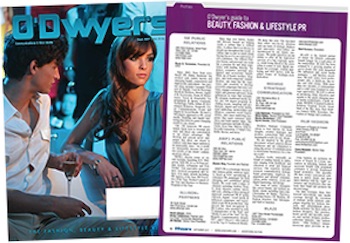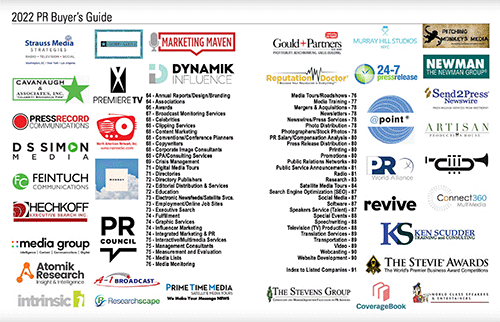|
|
Do you need to appear in a video interview to promote your company, organization, or service?
We’ve all seen countless people who’ve been interviewed on video, from the news to documentaries or promotional films. Sometimes they speak for seconds, or they might go on for a few minutes. There are even longer presentations that are symposiums or conference-based, or that enter the realm of educational training. The classic TED Talks are 18 minutes — though sometimes less than 10 — if that’s what the speaker opts for. They’re on video, but we can’t call them interviews. That is more about public speaking. Certainly, the interview opportunity and public speaking are very closely related. But the expectations, the preparation and the level of control are substantively different.
|
|
I’ve been interviewed on video and have also been a guest on radio shows. In my professional work, I’ve interviewed known and lesser-known people for my film projects. As an interviewer, I prepare for all my interviews and take time to direct the subject who will be featured, before the camera starts to roll and between takes. I’d like to give a number of general tips to make the video interview more successful for you when it’s your turn to speak.
First, do you know why you are being interviewed?
Know the intended purpose of the video, where it will be seen, and why you’re the person being asked to appear on camera (even if you made the decision, or even if other people will also appear).
Think not only about what you want to say but also what the viewers might want to hear (that’s a major oft-repeated PR rule) — and connect the two as seamlessly as possible. Stick to your message, but “hear” the intended audience’s possible thoughts and comments. Of course, try to anticipate some of the common questions that are out there. Those questions may change based on the subject you’re discussing or the timing of the video’s release (trending topics of interest can fluctuate over one or two days, weeks, or even longer depending on the industry).
 |
For more natural (and believable) presentation, forgo memorizing your entire text. Memorize only the organization of select ideas and specific keywords that must be incorporated. Do memorize — or plan — your pauses. They need to be there in the right places. Listeners are more a part of the conversation when pauses are present.
If you’re being interviewed, there’s going to be an interviewer — either on camera with you, or just prompting the questions. Let that person lead the way. Refrain from answering before the question has been fully heard or absorbed. After a radio interview once — when I was discussing one of my photography projects — the seasoned host pointed out that I jumped in too hastily at times, already with the answers that I wanted to give. (I was still invited to be back on the show a second time!)
How are you doing on camera? Even if you’re not offered, ask for some direction from the interviewer (or producer). Gauge how your message sounds to others who are not as closely familiar with what you want to say and the specific subjects you regularly speak about. Is it interesting, believable, and clearly understood? Ask for a candid response from those around you.
It all starts before the camera and audio equipment appear. Prepare before you get on camera. Except for circumstances where you have no advance warning, it’s best to allow some preparation time for a video interview by practicing your message and your presentation style. If being interviewed on video is new to you, ask for an observer to watch and offer general feedback. Don’t over-practice, though, for interviews — and remember not to memorize, to assure a more natural presence (one trick is to have the observer throw out a few different types of questions to prompt different responses).
After the video interview is released, you’ll have a chance to review your presentation. Learn from it, but also grasp that we’re often overly-sensitive to things and may be too close — and not used to seeing ourselves on camera — to properly assess how we did. We might also miss things that should be tapered for next time. Once you get comfortable with being interviewed, there will definitely be a next time. And then comes the challenge of keeping it new and fresh, strengthening our listening skills to really hear the questions posed to us, and accepting the challenge of sharing our information in new ways.
Video interviews are usually good marketing tools. If an outside media outlet initiated, you’ll have a finished clip to use for your promotional purposes. If you are commissioning, you can use video interviews to improve your website, or for presentation at meetings or large-audience live events where the audience is right there in the room (or watching via a live stream). Combine your interviews with B-roll (footage of activities, programs, product or other scenes that relate to your topic) to showcase your message in a storytelling manner. If the interview is good it really can be utilized in a number of strategic ways, even internally. It’s important to assess your archive periodically. We’ve all perused Media tabs on websites and seen, at times, that the latest entries are long ago. That sends a wrong message. The addition of even a couple of new clips can fill in that space nicely.
***
Judah S. Harris is a photographer, filmmaker, speaker and writer. He interviews people on camera and works closely with event, communications, and marketing teams to create video for live or online presentation. Connect: (718) 380-7945 or bitly.com/jsh-photo-video.

 Judah S. Harris
Judah S. Harris


 SaaS platforms now allow businesses to effectively manage and execute their own PR campaigns, putting pressure on agencies to demonstrate the value of the “traditional” PR model.
SaaS platforms now allow businesses to effectively manage and execute their own PR campaigns, putting pressure on agencies to demonstrate the value of the “traditional” PR model. Developing a well-designed TV campaign involves asking three important questions.
Developing a well-designed TV campaign involves asking three important questions. How a "Covid silver lining" can show the way to more effective, cost-efficient video communications.
How a "Covid silver lining" can show the way to more effective, cost-efficient video communications.


 Have a comment? Send it to
Have a comment? Send it to 
No comments have been submitted for this story yet.